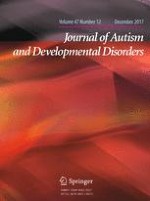Gepubliceerd in:

12-07-2016 | S.I. : Anxiety in Autism Spectrum Disorders
Intolerance of Uncertainty Predicts Anxiety Outcomes Following CBT in Youth with ASD
Auteurs:
Amy Keefer, Nicole L. Kreiser, Vini Singh, Audrey Blakeley-Smith, Amie Duncan, Catherine Johnson, Laura Klinger, Allison Meyer, Judy Reaven, Roma A. Vasa
Gepubliceerd in:
Journal of Autism and Developmental Disorders
|
Uitgave 12/2017
Log in om toegang te krijgen
Abstract
Modified cognitive–behavioral therapy (MCBT) has been demonstrated to reduce anxiety in youth with autism spectrum disorder (ASD). However, non-response rates are fairly high. Few studies have investigated factors associated with response. Intolerance of uncertainty (IU) is a treatment target for anxiety and worry in neurotypical populations and has been linked to anxiety and ASD. We sought to examine whether IU affects outcomes following MCBT in 43 children, ages 8–14 years, with ASD without intellectual disability. Consistent with prior data, there was a significant reduction in parent reported anxiety following MCBT. Higher levels of pre-intervention IU predicted higher anxiety and worry pre- and post-intervention. These findings suggest that targeting IU may improve outcomes following MCBT in youth with ASD and anxiety.
